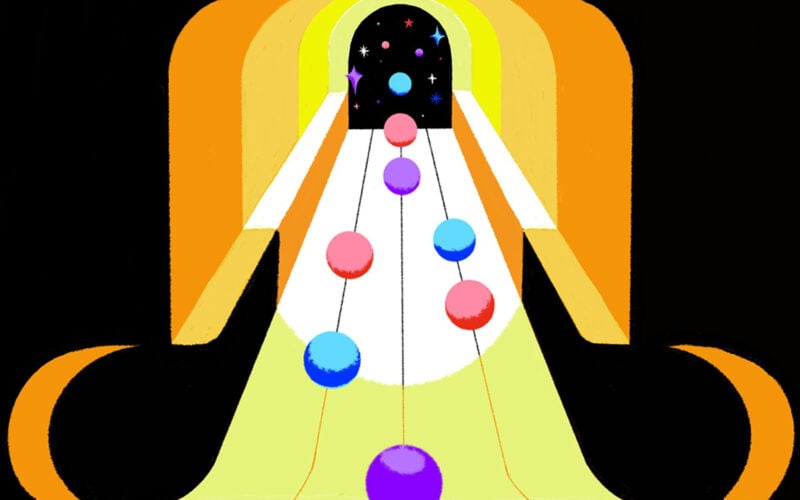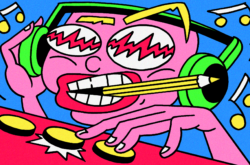Illustration: Leo Peng
Does every song need a bridge?
Of course not. Plenty of hit songs don’t have a bridge—think Dolly Parton’s “Jolene” or Justin Bieber’s “Sorry.” As a songwriter, you can choose whatever song structure you want, or even create a brand new structure, as long as it serves the music and engages the listener.
That being said, if you’re writing a song and it doesn’t quite feel complete, a bridge might be just the piece you’re missing. There’s a reason why the vast majority of songs have a bridge or some sort of interlude in the second half—it breaks up the monotony and surprises the listener with something new.
In this article, let’s take a look at what a bridge is, what function it serves, and how to write one. This will help you decide whether your next song needs a bridge, and if so, help you write one that adds something special to the song, rather than takes away from it.
Let’s get started!
What is a bridge in a song?
The bridge is a unique section of a song that ties together—or bridges together, if you will—other sections. For example, a common place for a bridge is between the second and third chorus.
You can place a bridge anywhere in the song, except for the very beginning or the very end, in which case it would be called an intro or outro.
A bridge often feels like a detour from the rest of the song. It provides a refreshing break before the listener is taken back to a familiar verse or chorus.
What does a bridge do?
A bridge can serve a few different purposes:
- It adds contrast, either lyrically, musically, or dynamically. This helps make the song more interesting and keeps the listener engaged until the end.
- It builds anticipation for the subsequent section. For example, if the second chorus was immediately followed by another identical chorus, that third chorus wouldn’t seem very exciting (though as always, there are exceptions to this). On the other hand, placing a bridge in the middle cleanses the listener’s palate, so to speak, and reignites their interest in the rest of the song.
- It adds to the song’s story. The lyrics in a bridge often add a new perspective, share new important details, or tell the listener how the story ends.
How to write a bridge
A great bridge supports the song by fulfilling one, if not multiple, of the above functions. To write an effective one, think about how you can change things up in terms of the song’s lyrics, music, and dynamics.
1. Write new lyrics
What story does your song tell, and how can the bridge help tell it? The great thing about bridges is that you don’t have to stick to the same structure you implemented in the verses and choruses. So, if there’s anything you weren’t able to say in earlier sections because of limitations like rhythm or rhyme scheme, now’s the time to say it.
You can also use bridge lyrics to:
- Provide specific details or use imagery to paint a picture
- Emphasize an idea
- Offer a different perspective
- Take the song in a new direction
- Reveal a plot twist
- Give new meaning to the last chorus
- Tell the listener what happens next
- Summarize the main point of the song
- Give the song closure
Take a look at the bridge from Beyoncé’s “If I Were a Boy,” for example:
It’s a little too late for you to come back
Say, it’s just a mistake
Think I’d forgive you like that
If you thought I would wait for you
You thought wrong
Everything up until this section is a hypothetical scenario in which Beyoncé imagines what she would be like as a man. But, in the bridge, she switches gears and speaks directly to someone who has hurt her. This makes the bridge a crucial piece that explains the rest of the song and gives the listener a deeper understanding of the situation—the reason she’s been singing about being a good partner is because someone hasn’t been a good partner to her.
The bridge also gives new meaning to the chorus that follows it. Instead of another hypothetical scenario, Beyoncé now sings similar lyrics, but directs them at the same person she was singing to in the bridge.
2. Change up the music
A bridge doesn’t sound like anything else you’ve heard in the song before. If it does, it’s likely a modified version of another section, meant to fulfill some of the functions of a bridge.
A true bridge veers off and introduces something brand new. This can be:
- New melodies
- New chords or a new key
- New rhythms
- New instruments
Doing this helps shift the energy of the song and keep the listener engaged. You don’t have to change everything all at once, but try experimenting with at least one of the above ideas and see how you can surprise the listener with something new.
For example, listen to the bridge in Olivia Rodrigo’s “drivers license.” It starts at 2:28 with the words, “Red lights, stop signs.”
Although the tempo hasn’t changed, the rhythm has, and it gives the section a completely different feel from the rest of the song. Before the bridge, every beat was emphasized, making the song feel like it’s moving forward and building up to something. The bridge abandons the old rhythm and introduces a new half-time groove. The chords and melody also change, but it’s really the new rhythm that makes us feel like we’ve arrived at a new place.
The bridge also has a different harmonic rhythm. For the most part, the other sections of the song switch chords every two bars. But here, the chords change with every bar, which also contributes to the new feeling.
3. Change up the dynamics
Great songs take the listener on a journey through tension and release.
Imagine a song in which every section builds excitement and anticipation—it may be enjoyable at first, but it will quickly get tiring to listen to. Not to mention, it would be quite disappointing if the anticipation doesn’t lead to anything. On the other hand, a song that’s consistently soft and relaxing can be a bit bland.
That’s why it’s important to alternate between periods of tension and periods of release. This can be done with elements like melody, harmony, and rhythm—in fact, that’s exactly what happens in the bridge of “drivers license”—but another common way to add tension and release is by playing around with dynamics.
Dynamics refer to how loud or soft different sessions are. For example, if you have a loud, intense chorus, you can follow it up with an even more intense bridge, or fall back and write one that’s softer and more stripped down. The important thing is that the dynamics should change when you arrive at a new section. Similarly, if you have a quiet bridge, the next section should be loud and exciting, or vice versa.
A great example of this is Adele’s “Rumour Has It.” The bridge starts at 2:18 with the line, “All of these words whispered in my ear.”
A lot of elements change in this bridge other than the dynamics, but the general sense is that this section is a lot softer than the rest—so much so that it sounds like it belongs in an entirely different song.
Going from an upbeat chorus to a soft bridge and then back to an upbeat chorus surprises the listener, keeps them invested in what might happen next, and makes the eventual return of the chorus extremely satisfying.
Do what feels right
We’ve talked about how you can make your bridges stand out using lyrics, music, and dynamics. But for every one of these guidelines, there are dozens of songs that break the rules.
For example, most songs have a single bridge that only happens once, but there are songs with two bridges (ex. “Bad Romance” by Lady Gaga) and songs that repeat the same bridge in two different places (ex. “Happy” by Pharrell Williams).
What this should tell you is that it doesn’t really matter how you write your bridge, how many times you repeat it, how many of them you have, or whether you have a bridge at all.
What matters most is that whatever you do, you do it with intention. The worst thing you can do is force yourself to write a bridge just for the sake of having one. If it doesn’t add anything to the song, don’t force it. Trust your gut, trust your ears, and do what feels right.
Learn more about the holistic process of writing a song:
March 30, 2023



